Constructed wetland for municipal and domestic wastewater
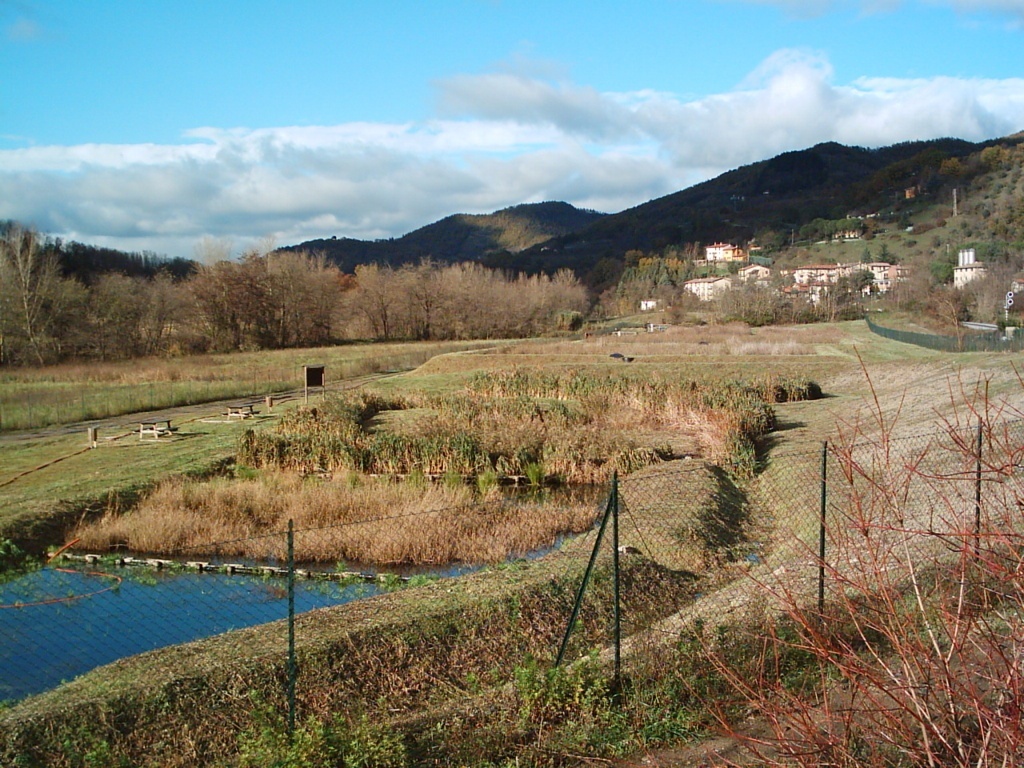
Constructed wetland is an optimal nature-based solution for the decentralised treatment of wastewater generated from small settlements (small town below 2000 PE, scattered houses), with numerous national and international applications in the last 30 years. However, the constructed wetland technology is not affected by an upper limit in terms of treatable PE, if enough area is available. Nowadays, much bigger towns can be served by constructed wetlands thanks to the advancement driven by research activities; for instance, IRIDRA has designed one of the biggest constructed wetland secondary treatment plant in the World, i.e. the plant of Ohrei, which treats up to 20,000 PE.
Urban centers - IRIDRA's solutions
From small settlments (hundreds of inhabitants) up to small-middle towns (up to 20,000 inhabitants), IRIDRA proposes the following technical solutions
Classical constructed wetlands
- Constructed wetlands with horizontal subsurface flow (HF)
- Constructed wetlands with horizontal subsurface flow (HF)
- Constructed wetlands with free water surface (FWS)
- Hybrid constructed wetlands (HF + VF, HF + FWS, HF + VF + HF, HF + VF + HF + FWS, VF + HF)
Intensified constructed wetlands (Constructed wetlands 2.0)
- French reed bed (FRB)
- Aerated constructed wetlands (FBA™)
Additional integrated solutions
- Sludge drying reed bed (SDRB)
Technological compact solutions
- Activated sludge
- Sequencing Batch Reactor - SBR
- Membrane Biological Reactor - MBR
In Italy, the law n. 152 of 1999 fixed that every Municipality and urban settlement has to be equipped with a wastewater treatment system. Utilization of traditional depuration systems (total oxidation, bio-disks, etc) also for little settlements has never produced real benefits in term of pollutant removal; this because the hydraulic and organic load variations typical of little and medium settlements and touristic centres don't fit well with traditional technologies, but also because the technologic management of those plants is not sustainable for a little municipality, both economically and professionally.
The solution chosen for several years has been the construction of big treatment plants where convoy and treat wastewater of many settlement: but, considered the characteristics of our land, this solution brings to the necessity of realizing long and not cheap pipes. Moreover, the logic of centralization of the depuration treatment strongly alters the balances of water resource, damaging superficial and underground water bodies: in fact, it can happen that the great quantities of water captured for human necessities are given back to watersheds completely different from the withdrawal one, or to the same watershed but strongly downstream, creating the impoverishment of long fluvial drafts.
Constructed wetlands are a modern technology that uses the depurative capacity of natural ecosystems for human activities needs. Its application to wastewater of municipalities and settlements with 500 to 5000 P.E. has given very good results, with management costs 5-6 times lower than those of traditional plants, allowing an on-site wastewater treatment in a decentralized logic of the depuration system. More, it has to be considered the better environmental impact and the greater feasibility of constructed wetlands compared to traditional plants, quality that permits to consider the depuration plant not as something to confine away from urban areas, but as an instrument or environmental restoration.
IRIDRA's experience on CW for small size towns (below 2,000 PE)
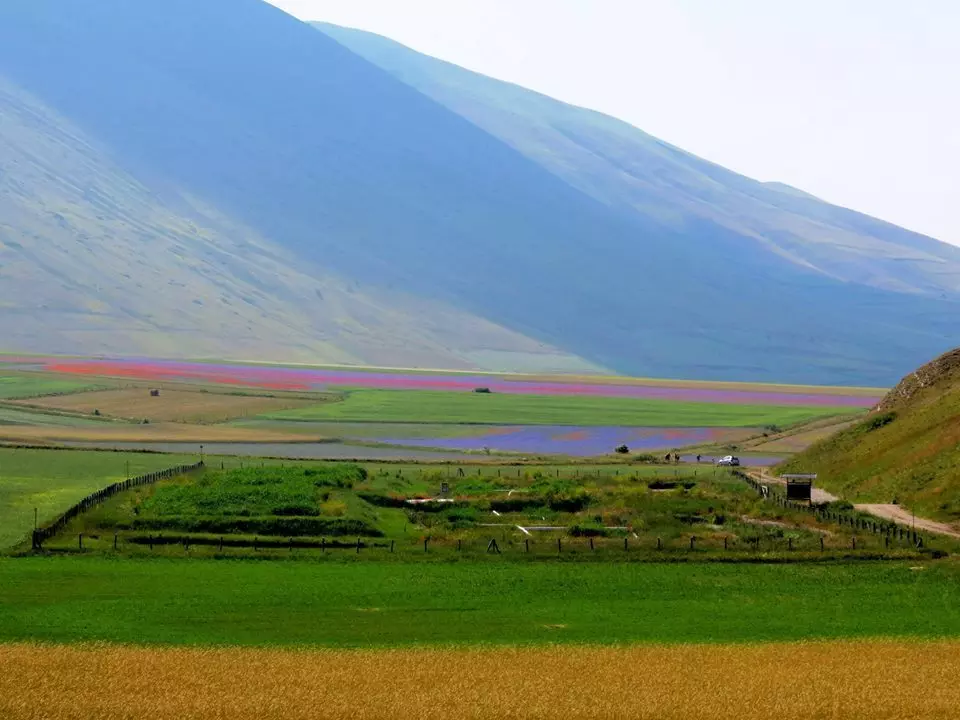
CW WWTP of Castelluccio di Norcia (1000 PE), sited in an area of high naturalistic value (Natural Park of Monti Sibillini). Designed by IRIDRA in 2011.
IRIDRA's experience on CW for medium size towns (above 2,000 PE)
Recent IRIDRA's experience suggest that thers isn't any above threshold in terms of maximum PE treatable with constructed wetlands if land is not an issue. Indeed, monitored and stable good perfomances where shown for Dicomanto WWPT (3500 PE - 1 hectar) and Orhei (20,000 PE - 5 hectars). Less footprint can be obtained with aerated CW systems.
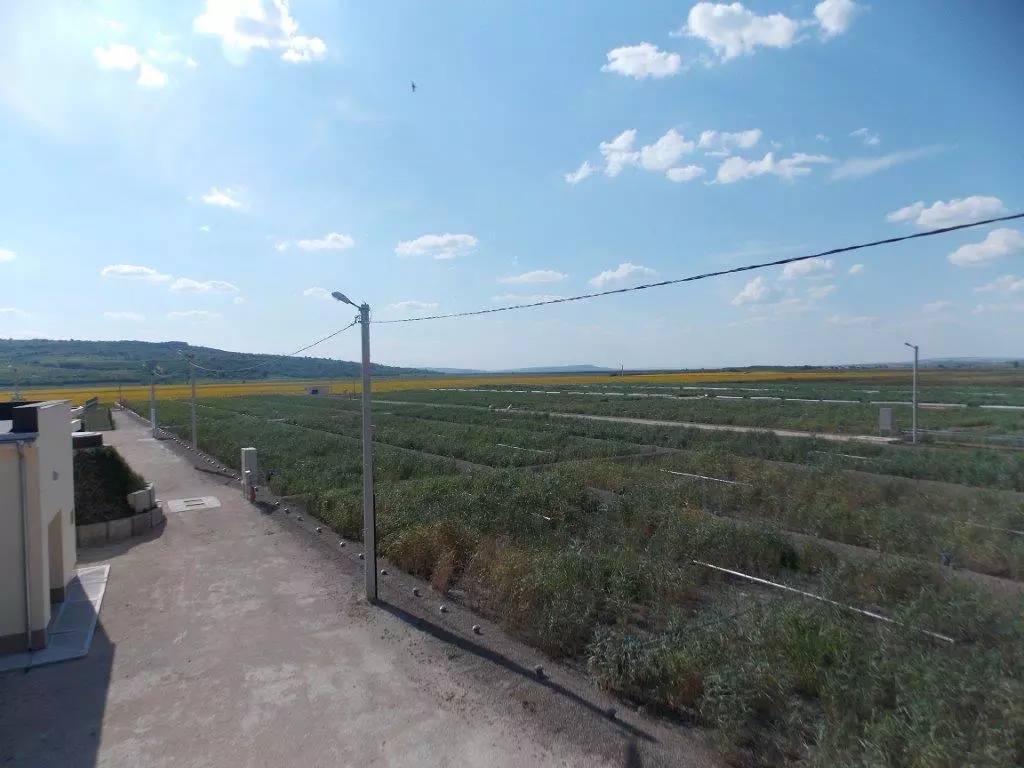
CW WWTP of Orhei municipality (20,000 PE - Moldavia), designed by IRIDRA in collaboration with P&P, SWS, Hydea.
Constructed Wetlands vS conventional technological solutions - Investment and O&M costs
Investment costs of constructed wetland (CW) systems are usually comparable with those of conventional technological solutions (e.g. activated sludge) up to the threshold of 2000 PE; above this value, scale effect leads to less investment costs for compact technological solutions. On average, and on the basis of our Italian Experience, investment costs for CW is about 100 €/mq of net surface; this is only an indicative value, since they can vary according to with different water quality standards to be met, type of used CW system, WWTP size, and local material costs. For instance, the investment costs for small settlement can reach up to 150-200 €/mq.
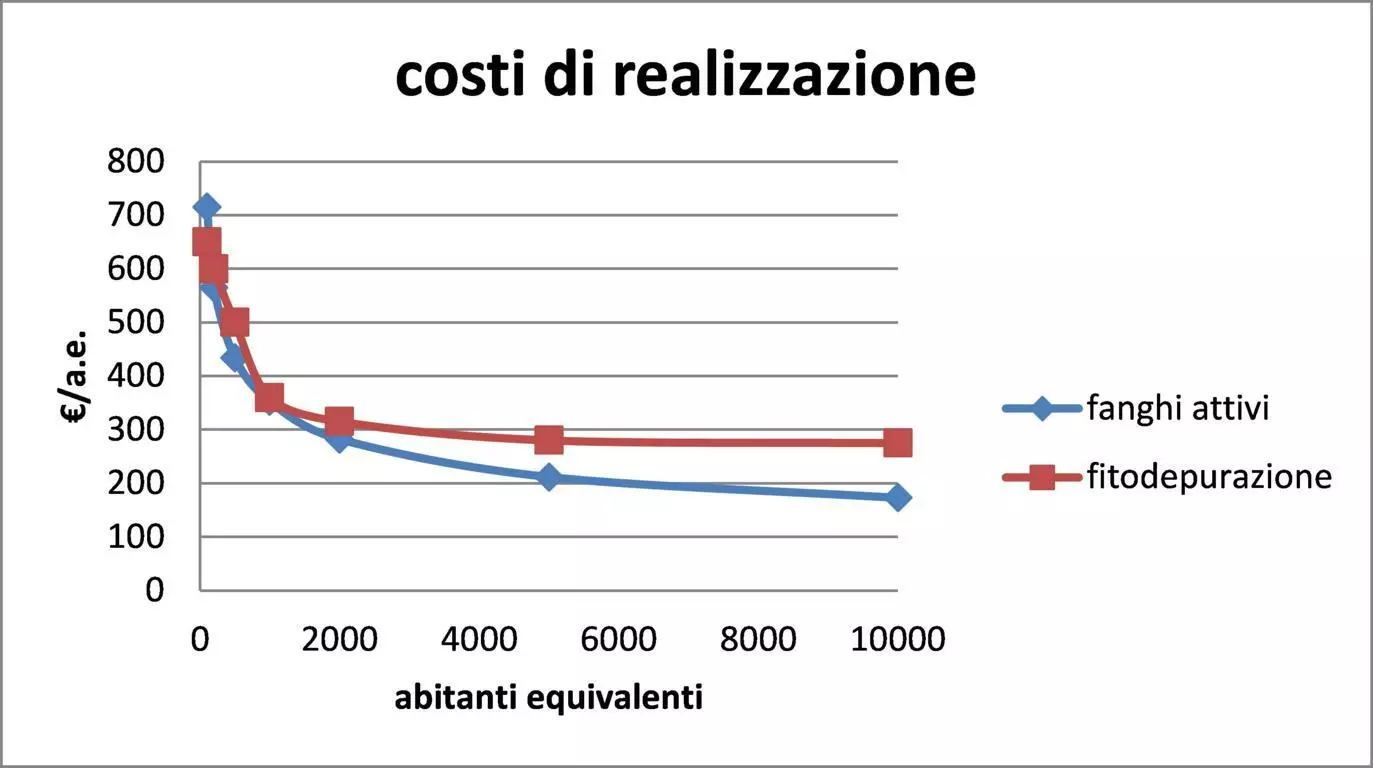
Comparison among investment costs of CW and activated sludge WWPTs on the basis of Italian experience (IRIDRA's analysis published in Masotti, 2009)
Operational and Maintenance (O&M) costs are significantly lower for nature-based solutions in comparison with activated sludge systems, due to the almost negligible costs of consumed energy. Usually, O&M costs of CW for wastewater treatment is on average equal to 14 €/PE per year (even lower if french systems for raw wastewater treatment are adopted, and equal to 7-8 €/PE per year), therefore about 5-10 less than O&M costs for activated sludge systems (50-100 €/PE per year). Moreover, CW WWTPs do not require specialized and permanent personnel to be maintained, reducing, even more, the O&M costs.
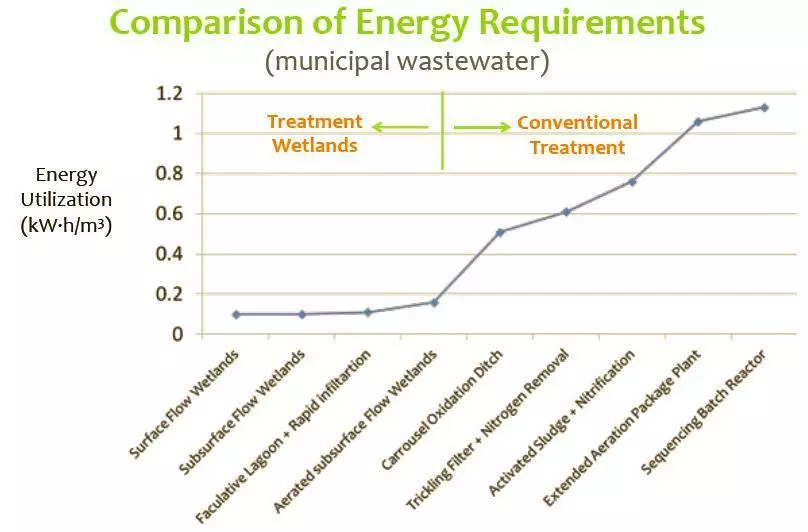
Comparison of energy consumption for different conventional and nature-based treatment technologies (Kadlec&Wallace, 2009)
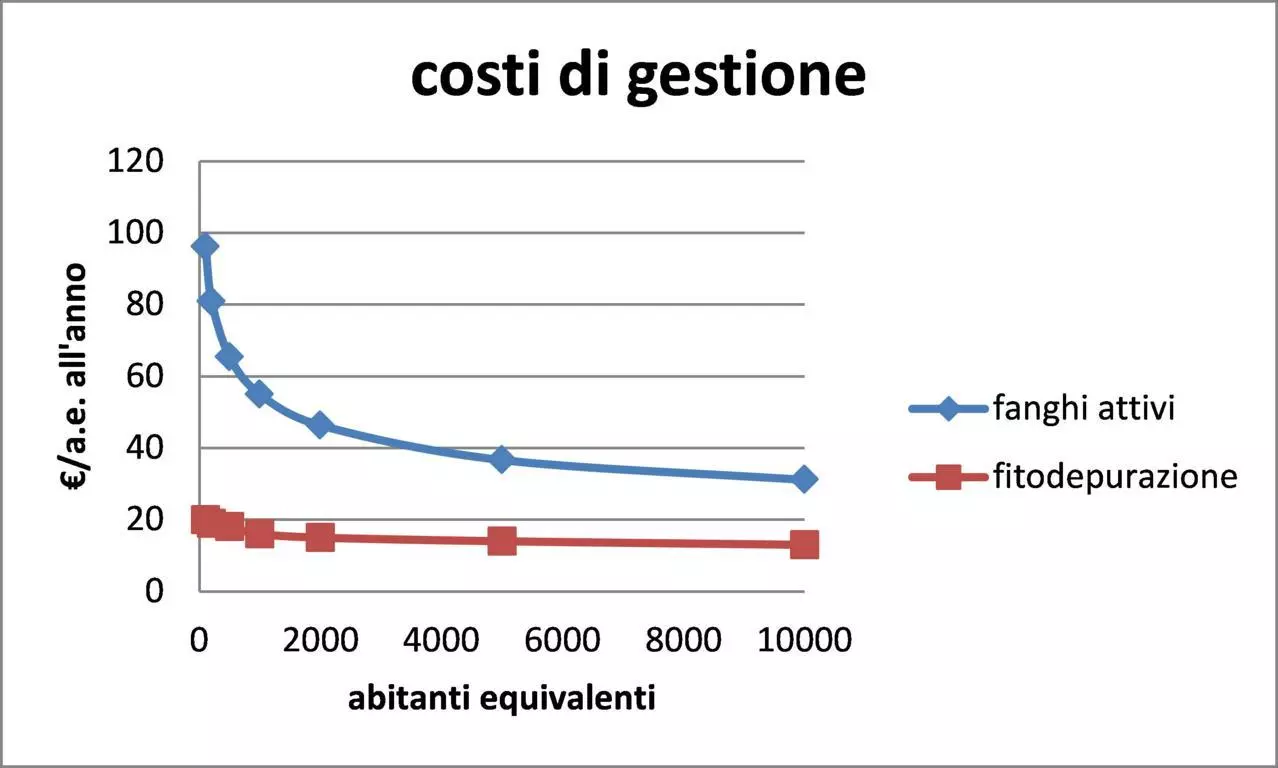
O&M cost comparison between CW and activated sludge WWTPs on the basis of Italian experience (IRIDRA's analysis)
IRIDRA's projects

Municipality of Castelluccio di Norcia (PG - Italy)
Treated person equivalent : 1000 PE
Chosen Nature-based solution : FRB + VF + FWS
Peculiarity : Sited in an area of high naturalistic value (Natural Park of Monti Sibillini)
Year of realization : 2012

Orhei Municipality (Moldova)
Treated person equivalent : 20,000 PE
Chosen Nature-based solution : FRB + VF
Peculiarity : Biggest nature-based solution for primary and secondary treatment in Europe and among the biggest worldwide. Project financed by the World Bank
Year of realization : 2013
The Orhei CWTP consists of screening, grit removal and equalization as a primary treatment; the primary sedimentation phase has been skipped, because it's carried out directly at the secondary treatment stage by the so-called French system. The system consists of 4 lines operating in parallel independently. Each line is composed of two stages in series:1st Stage - French system (vertical flow reed beds fed with raw wastewater where there's a formation of a sludge aerobic layer on the surface, removed every 10-12 years.2nd stage - vertical submerged flow reed beds.Total surface 35000 m2 (5 ha the gross area). Surely one the largest Constructed Wetlands for secondary treatment of municipal wastewater present worldwide!
Design Team: SWS Srl, IRIDRA Srl, HYDEA Srl, POSH&Partners GmbH
Realisation Works by: HEILIT Umwelttechnik GmbH in association with BioPlanta GmbH
Management APACANAL Orhei
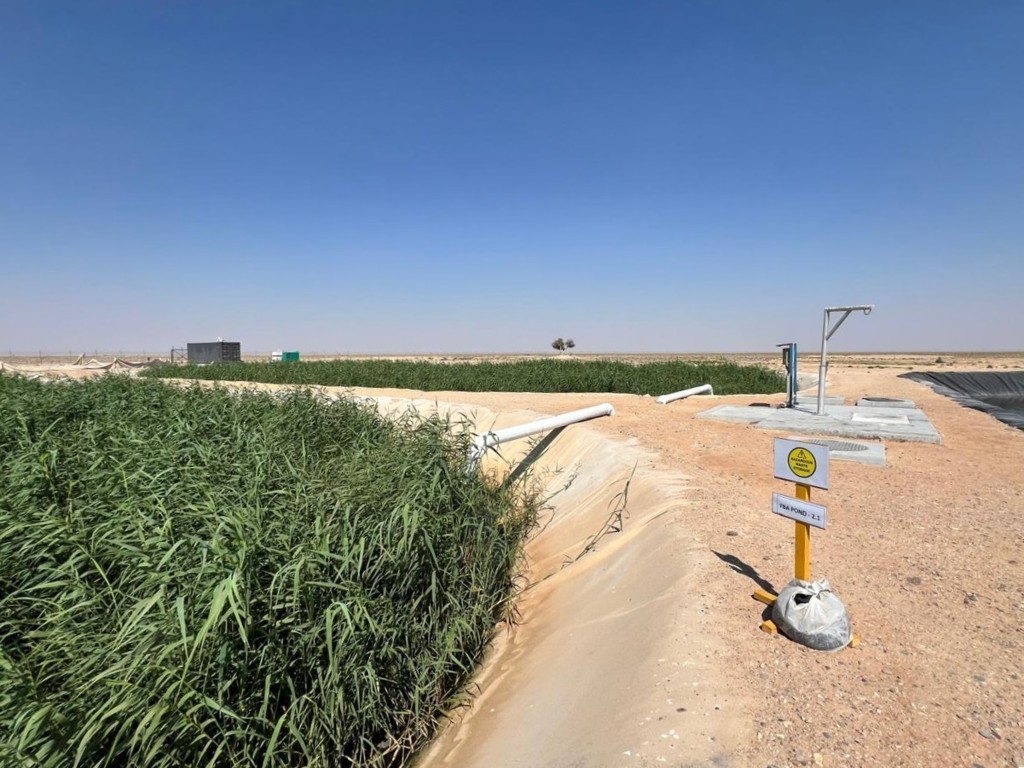
Al Jazer and Mahout (Oman)
Treated person equivalent : 4000 PE each
Chosen Nature-based solution : FRB + FBA
Year of realization: ongoing
Al Jazer and Mahout are located in the central part of Oman in the desert not far from the sea and 2 h drive from Duqm city. Each systems will treat 600 m3/d, corresponding to about 4000 persons, disposed by tankers which periodically empty the storage tanks in the village The treatment scheme is French Reed Bed (FRB) 4000 m2 followed by Forced Bed Aeration (FBA) 2000 m2 of surface, chlorination and storage for reuse or alternatively disposed in the ground, respecting the very stringent limits for reuse in Oman. In Mahout the existing system, constituted by a new WSP never operating, will be converted in treatment wetland. The contractor is Global Chemicals, a omanian company expert in construction and management of water and wastewater treatment plants. The client is HAYA, the local public utility. The project is under the umbrella of Global Wetland Technology, involving in the design IRIDRA and Ecobird, as well as prof. Alexandros Stefanakis as external expert on treatment wetland in Oman.
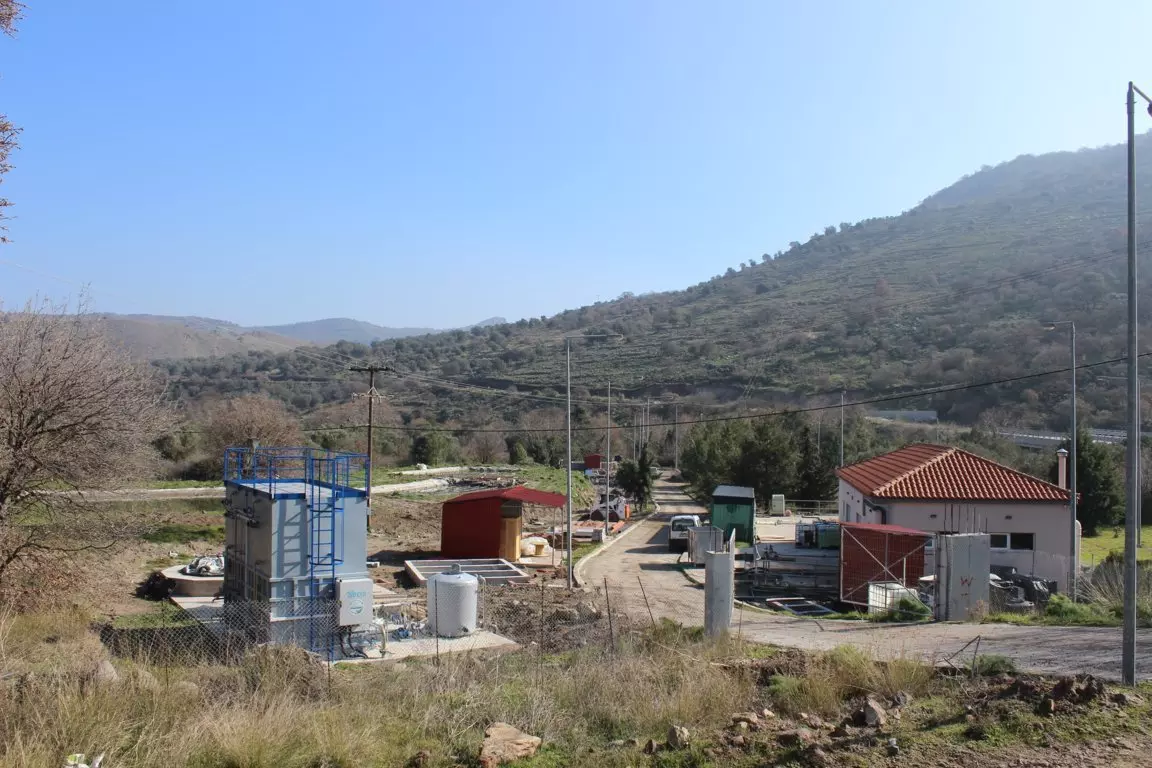
Antissa, Lesvos island (Greece)
Treated wastewater load : 10 m3/d off season - 100 m3/d touristic season
Chosen Nature-based solution : UASB + saturated VF + unsaturated VF
Peculiarity : HYDRO 1 pilot site of the HYDROUSA project, aimed to reuse wastewater in the context of circular economy, recovering energy, sludge (UASB), and treated wastewater rich in nutrients for fertigation of an agroforestry site (HYDRO 2)
Year of realization : 2021
The effluent is reused in an Agroforestry site (HYDRO 2) for food production.
HYDRO 1+HYDRO 2 and the monitoring tools were designed by a multidisciplinar group involving different European partners (Aeris, Iridra, Alchemia Nova, Agenso, NTUA, UNIVPM) and target to have a full circular economy approach for wastewater, recovering energy and sludge from UASB, water and nutrients from CW, producing valuable food in HYDRO 2.
The CW stage has the following characteristics: 1st stage saturated vertical subsurface downflow CW, VF1 SAT, with a bed of 17.5x14 m (245 m2);
2nd stage unsaturated intermittent load VF CW, VF2 UNSAT, which is divided in 3 beds to fit the local orography; the 3 beds host the 4 VF2 UNSAT lines for batch feeding (lines A, B, C, and D); each line sizes 18x8.5 m, i.e. about 150 m2; the total net surface of VF2 UNSAT is equal to about 600 m2.
HYDRO 1 and HYDRO 2 are two of the six pilots of the HYDROUSA project
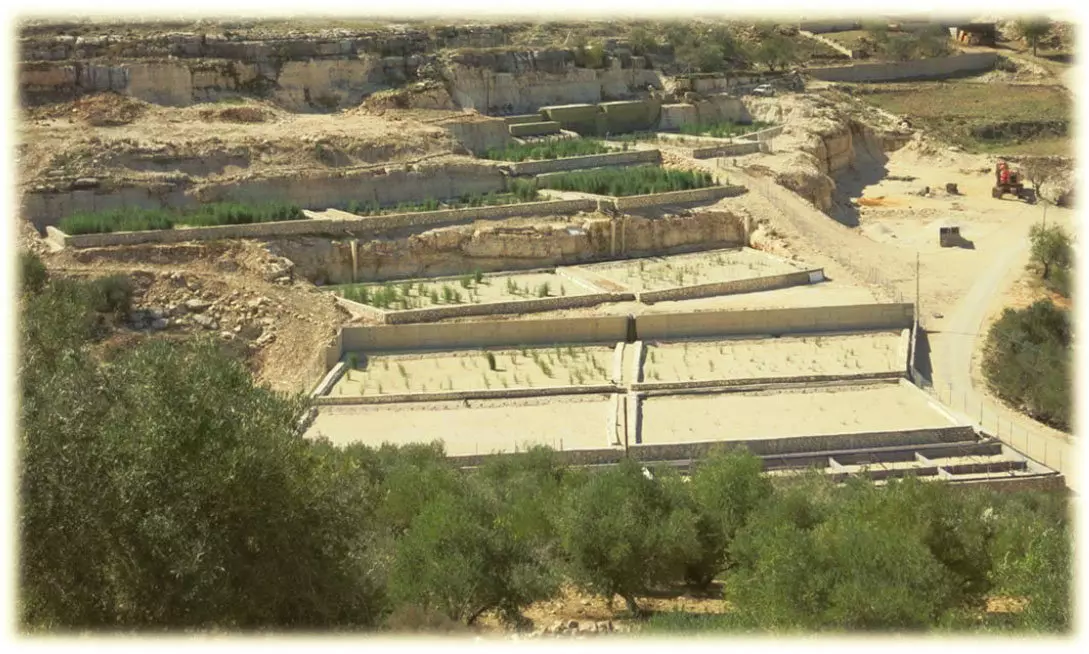
Sarra village, Nablus (Palestine)
Treated person equivalent : 4300 PE
Chosen Nature-based solution : VF + HF
Peculiarity : Sanitation improvement and treated wastewater reuse for irrigation of olive trees. Project financed by the European Union
Year of realization : 2012-2013
The two WWTP has been officially started in October 2014.
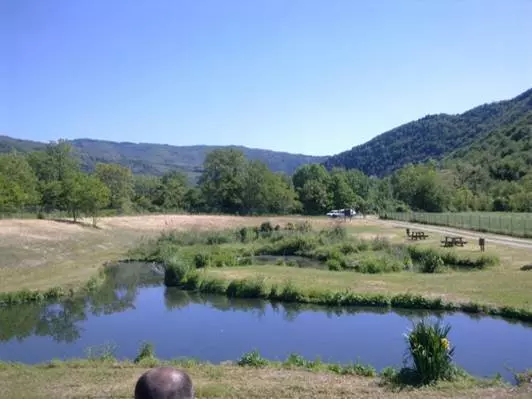
Municipality of Dicomano (FI - Italy)
Treated person equivalent : 3500 PE
Chosen Nature-based solution : HF + VF + HF + FWS
Year of realization : 2003
This multi-stage plant (SFS-h + SFS-v + SFS-h + FWS) is the biggest secondary treatment Constructed Wetland system in Italy.

Municipal dog shelter of Lavello (PZ - Italy)
Users : 300 dogs
Chosen Nature-based solution : HF + VF + VF
Year of realization : 2006
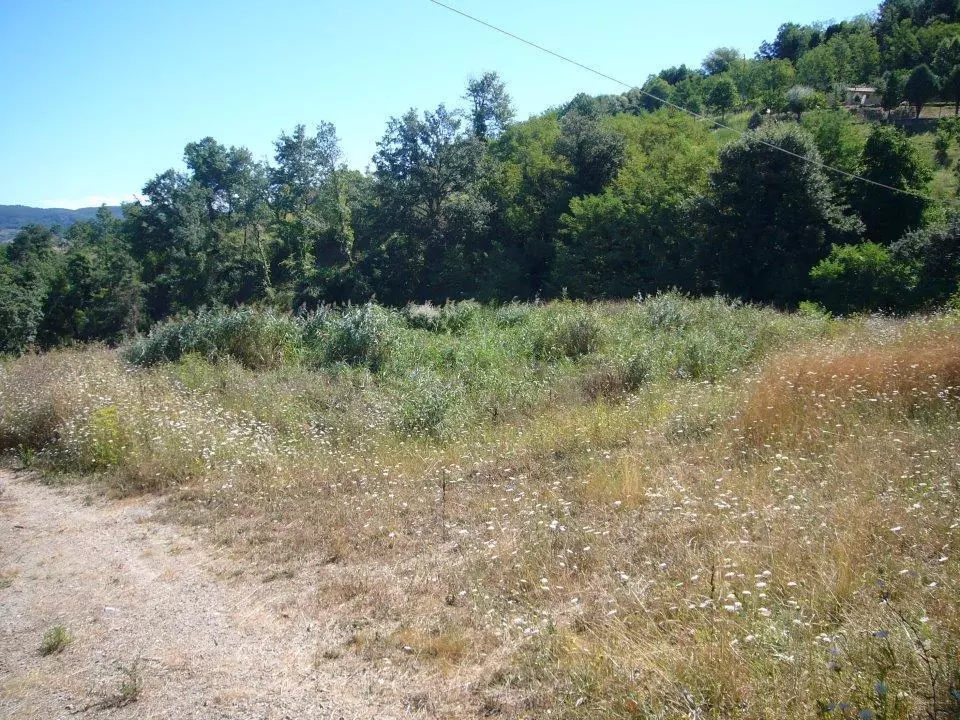
Celle sul Rigo district, Municipality of San Casciano dei Bagni (SI - Italy)
Treated person equivalent : 620 PE
Chosen Nature-based solution : HF
Year of realization : 2004
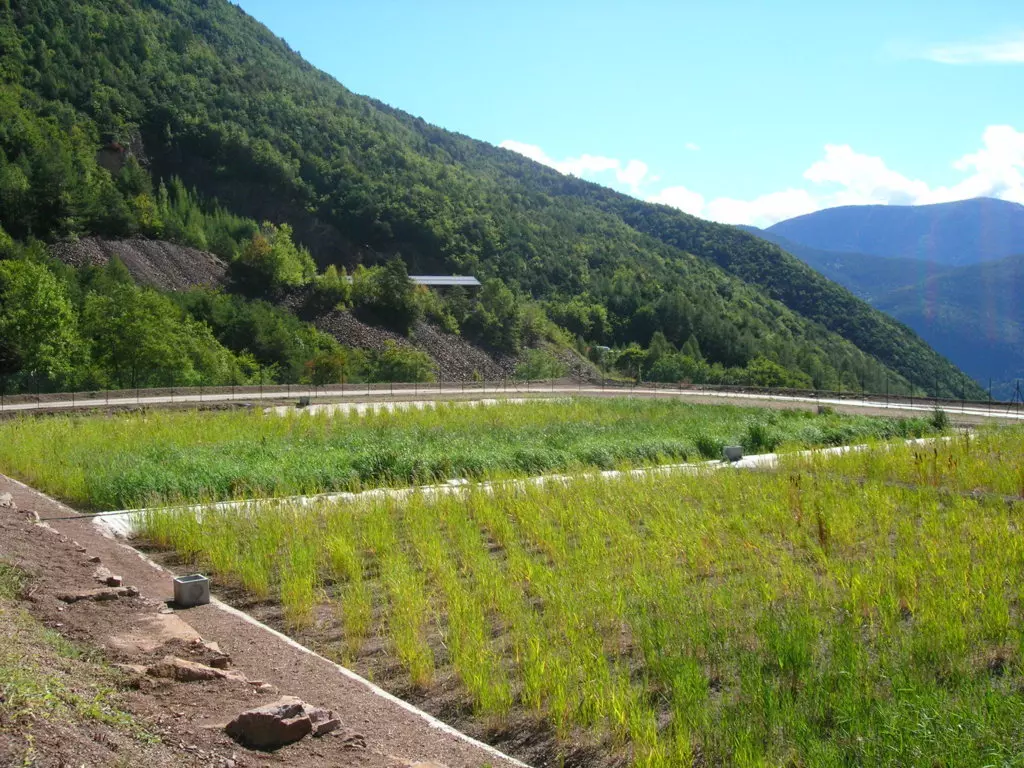
Lago Santo, Cembra (TN - Italy)
Treated person equivalent : 450 PE
Chosen Nature-based solution : HF
Year of realization : 2008
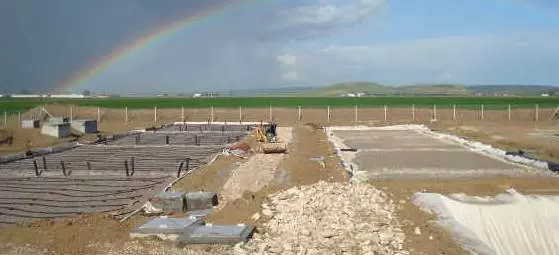
Chorfech village (Tunisi)
Treated person equivalent : 450 PE
Chosen Nature-based solution : HF + VF + HF
Peculiarity : Nature-based solution realized under the European funded project Zer0-M
Year of realization : 2008
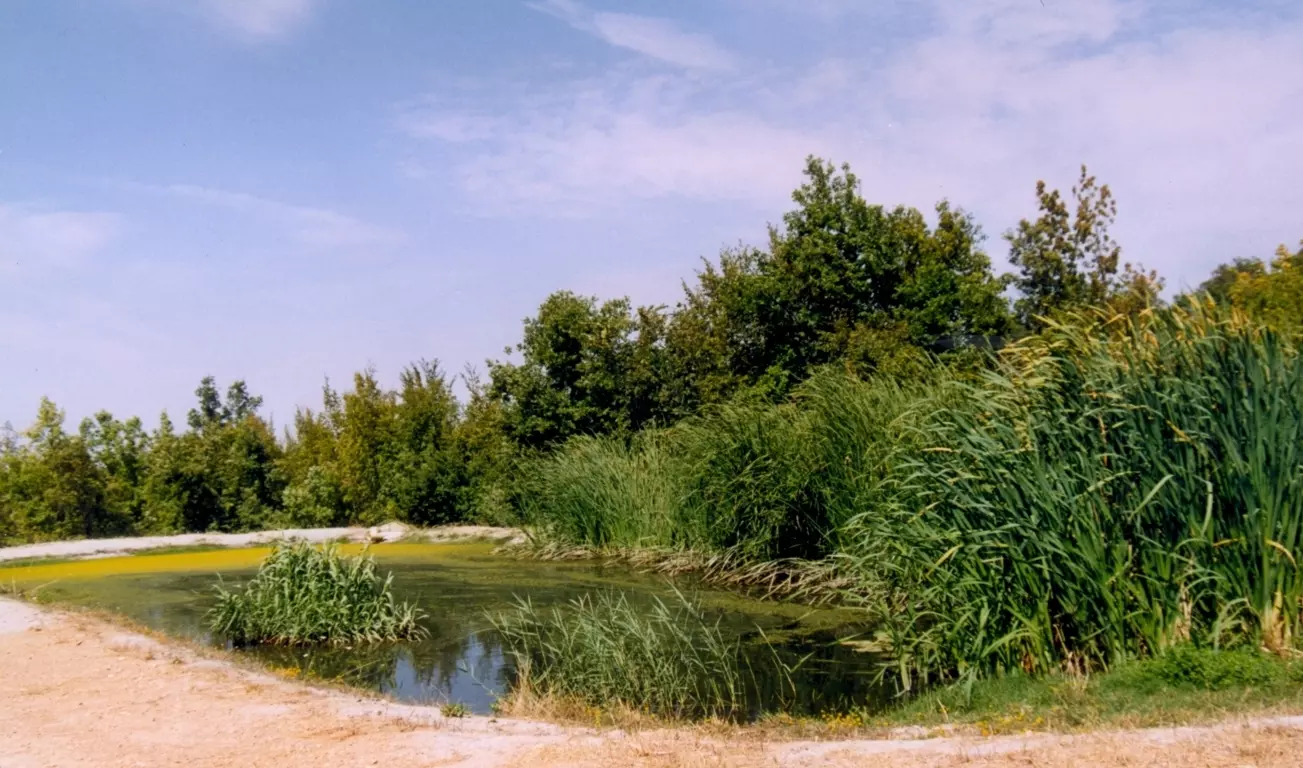
Municipality of Spannocchia (SI - Italy)
Treated person equivalent : 60 PE
Chosen Nature-based solution : HF + FWS
Year of realization : 1999

Municipality of Dozza (BO - Italy)
Treated person equivalent : 120 PE
Chosen Nature-based solution : HF
Year of realization : 2002
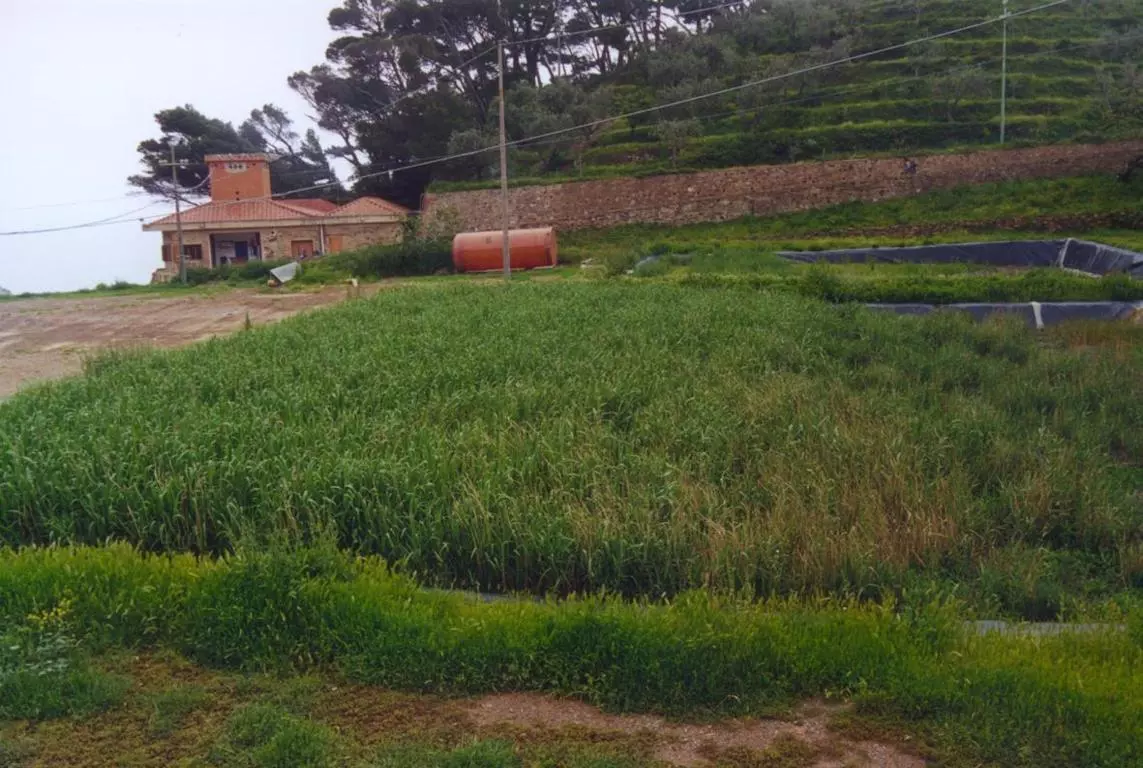
Prison of Isola di Gorgona (LI - Italy)
Treated person equivalent : 100-400 PE
Chosen Nature-based solution : HF
Year of realization : 1996

Hajja village (Palestine)
Treated person equivalent : 1000 PE
Chosen Nature-based solution : VF + HF
Year of realization : 2013
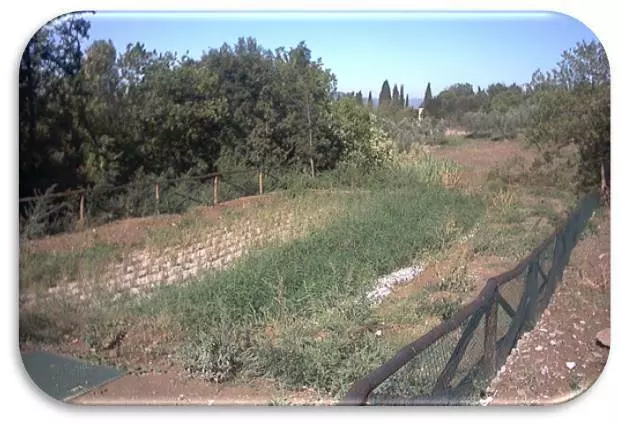
Marciola district, Scandicci (FI - Italy)
Treated person equivalent : 125 PE
Chosen Nature-based solution : HF
Year of realization : 2001
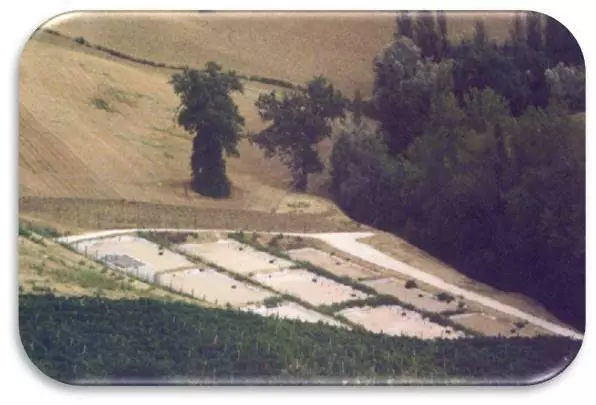
Municipality of Montecarotto (AN - Italy)
Treated person equivalent : 180 PE
Chosen Nature-based solution : HF
Year of realization : 2001
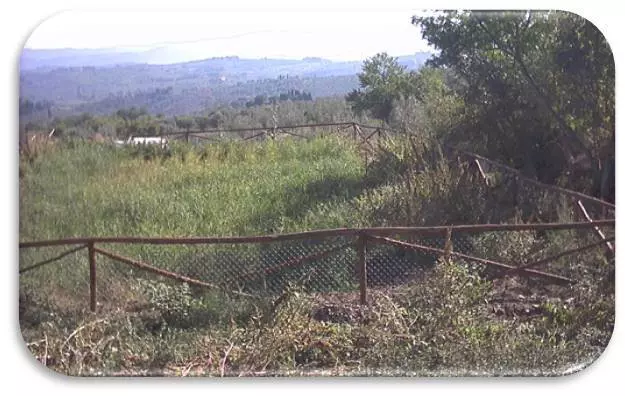
Mosciano district, Municipality of Scandicci (FI - Italy)
Treated person equivalent : 60 PE
Chosen Nature-based solution : HF
Year of realization : 2001

Olle district, Municipality of Finale Ligure (SV)
Treated person equivalent : 200
Chosen Nature-based solution: HF + VF + HF + FWS
Year of realization: 2000
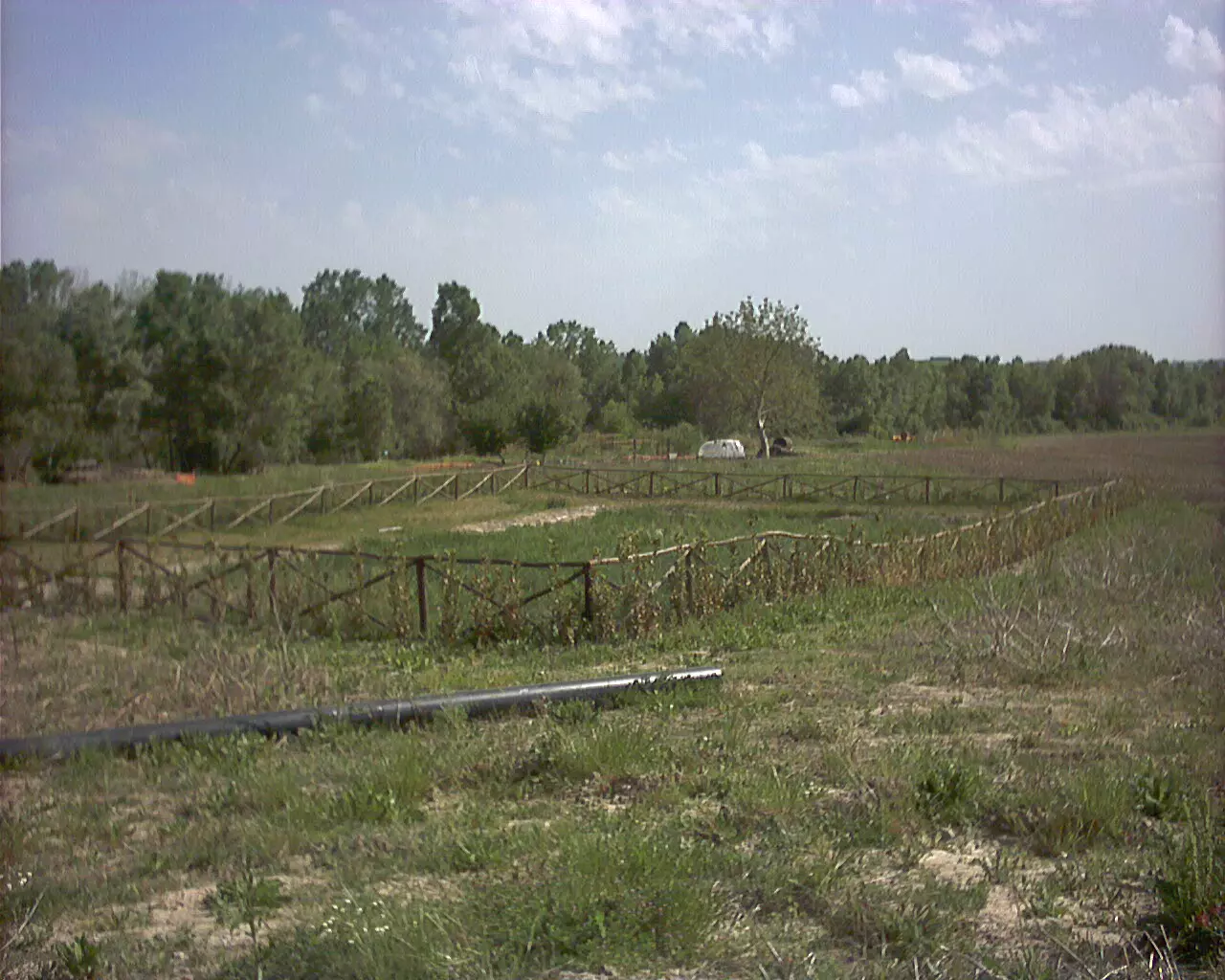
Palazzone district, Municipality of San Casciano dei Bagni (SI - Italy)
Treated person equivalent : 600 PE
Chosen Nature-based solution : HF
Year of realization : 2005

Ponte a Rigo district, Municipality of San Casciano dei Bagni (SI - Italy)
Treated person equivalent : 120 PE
Chosen Nature-based solution : HF
Year of realization : 2002
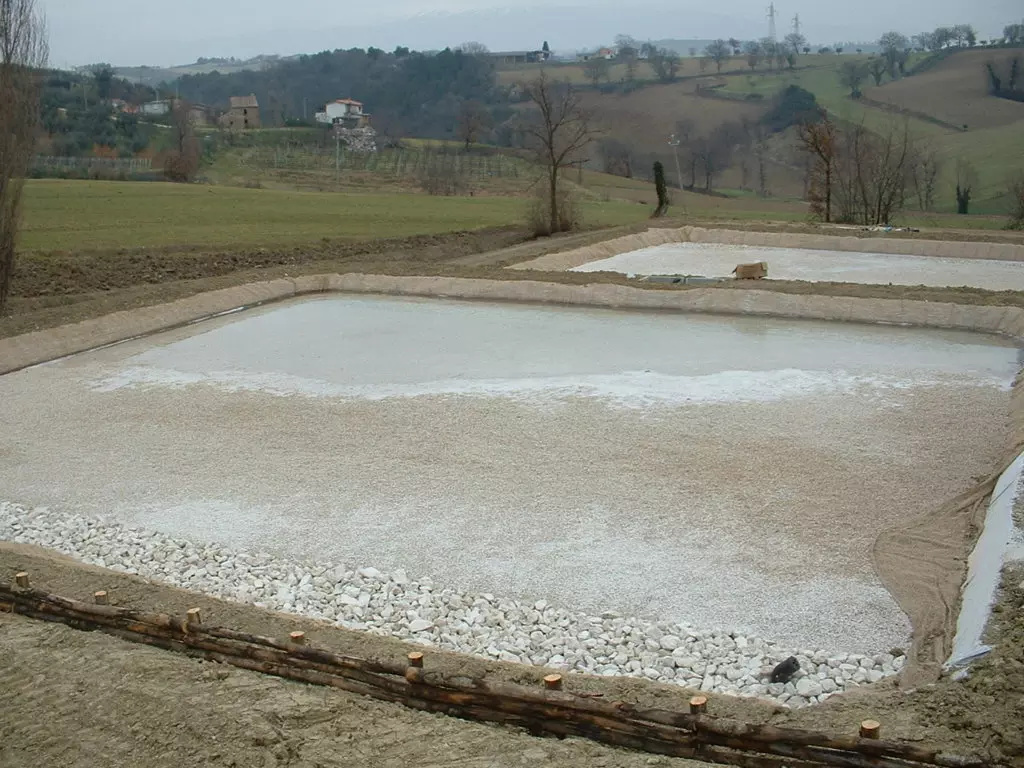
Villa Marchese district, Municipality of Guado Cattaneo (PG - Italy)
Treated person equivalent : 150 PE
Chosen Nature-based solution : HF
Year of realization : 2003-2004
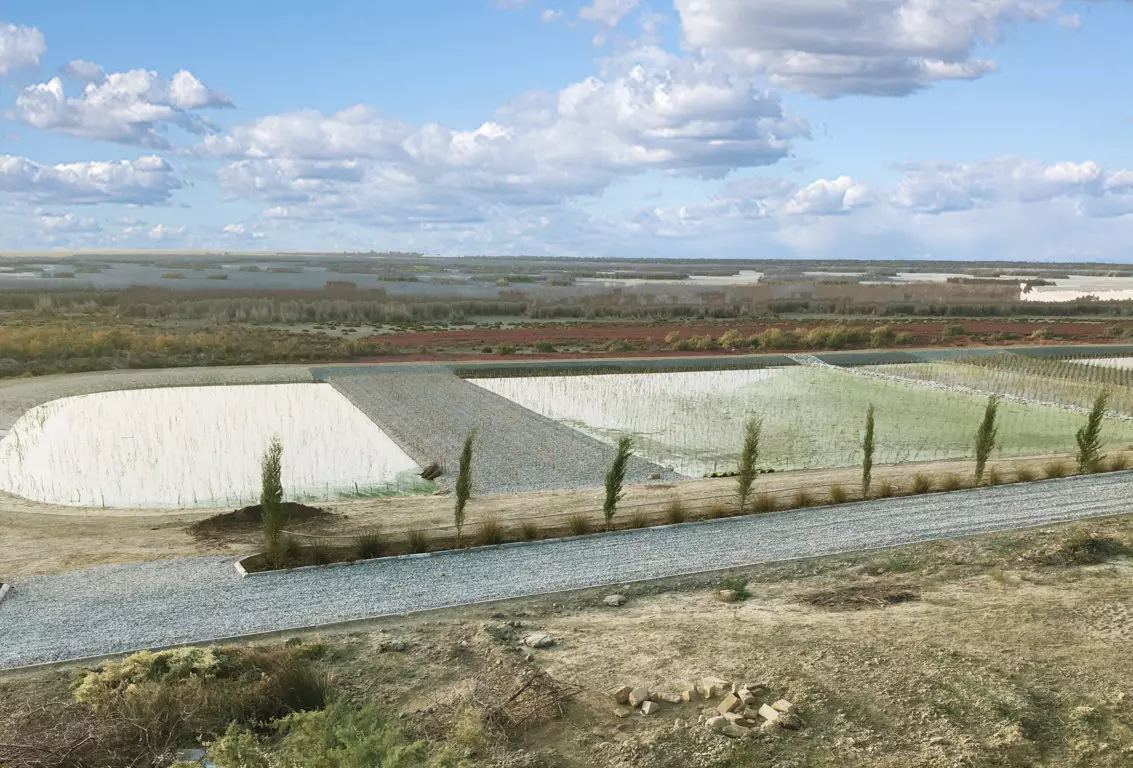
Shirvan village, Hajigabul lake (Azerbaijan)
Treated person equivalent : 325 PE (referred to organic load)
Chosen Nature-based solution : FWS
Year of realization : 2020
To prevent the pollution of the Hajigabul lake, the UNDP Kura Project decided to restore a habitat able to treat the polluted water before it flows into the lake: the use of constructed wetlands to treat.
According to the design, the constructed wetland is able to treat a flow of about 3 l/s, derived from the existing small channel flowing into the lake, in whitch wastewater produced by the small community of Shirvan are discharged untreated. The general lay-out of the proposed treatment wetland can be summarized as follows: (i) Preliminary treatment and polluted water diversion: a manual screen in envisaged to block coarse solids along the existing outflow and a small weir, about 20 cm high that feeds a pipe to extract part of the flow (maximum around 10 l/s) and directs it to a pumping station that diverts the flow into the CW; (ii) Constructed Wetland: the CW is composed by one single stage of Free Water Surface System (FWS) fully vegetated with emergent plants; total area of the bottom 4350 m2, total area of the water surface 5480 m2; (iii) Gravity discharge into the lake.
The system is designed to discharge a treated water with the following water quality characteristics: BOD5 < 30 mg/l, COD < 100 mg/l; TSS < 60 mg/l; E.coli reduction > 90%





